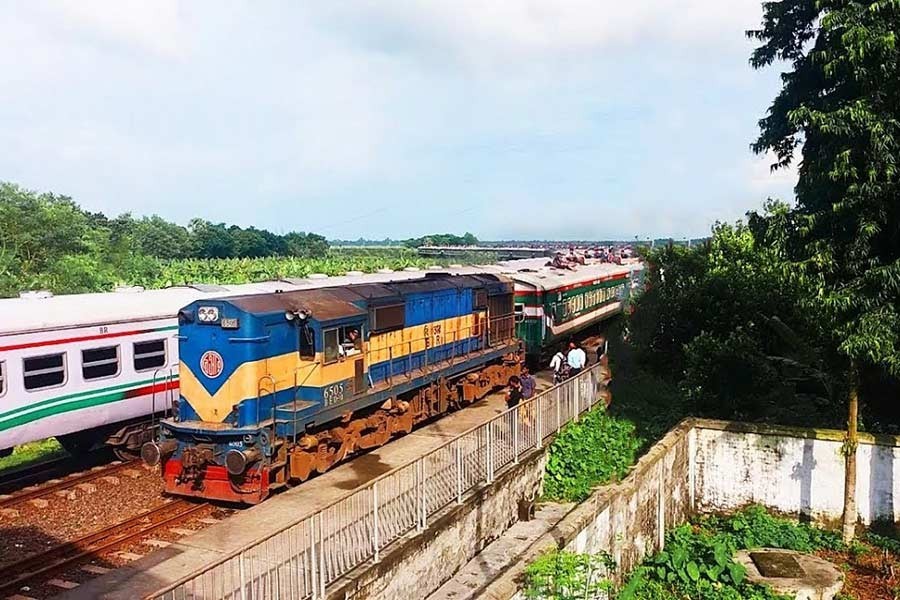A security cordon, which looks like high metal fencing, on both sides of the Banani-Mohakhali railway line makes many people quite upbeat. They have repeatedly expressed their worries about the anarchic situation in place on the spaces close to the railway tracks in different parts of the capital. The chaos is created by the makeshift kitchen markets and shanties, which have sprouted close to the tracks. Minor and major accidents are common in these areas. The trains are compelled to move at speed far lower than normal as they pass the area. A long stretch starting from the Kamalapur Railway Station on the Dhaka-Narayanganj route has long emerged as a virtual nightmare to the train operators. Repeated media reports on the plight of the railway track in the area proved futile. The railway authorities appeared to be little bothered as the kitchen markets and shops began nearly abutting on the tracks. Now that a semblance of a protective fencing has been built, lots of people look to the possibility of constructing longer security cordons elsewhere in the city. They want to see the railway tracks, and the travels, hazard-free.
Visibly constructed to facilitate the work of the 46.73km PPP project, Dhaka Elevated Expressway, which runs parallel to the rail track on Banani-Mohakhali section, the metal-fencings can also be viewed as a vital measure: protecting the country's premier railway track from encroachers and compulsive jaywalkers. The railway authorities can take cues from this security cordon to keep its tracks free of hazards, as well as inconveniences caused to the train operators. In a highly congested and unwieldy city like Dhaka, the fencing-off of the railway tracks in the crowded areas has long been overdue. The necessity of security cordons for rail tracks should be mulled for places close to the stations near cities and towns, and business hubs throughout the country.
Notwithstanding the ubiquitous routes of long and mid-distance coaches, a large number of travellers still prefer trains to buses. Railway journeys have long been proven largely safe, with their many facilities absent in buses. Except during the long holidays, the trains remain spacious offering space for leg stretches, round the year. Lately, the inter-city trains have drastically cut their travel time. Such a passenger-friendly and comfortable mode of transport can in no way be allowed to get displaced from their premier status in the country's transport sector.
Against this backdrop, the authorities ought to ensure that the trains offer unhindered journeys and become speedier to attract passengers in larger numbers. Undoubtedly, it's a tall order, and quite time-consuming too. On outlying routes, people are disillusioned with rail travels due, mainly, to their late arrival and departure. Many have been seen switching over to road transports, especially buses and coaches. Moreover, the lately increasing train accidents due to the absence of adequate number of level crossings, and those without guards, a lot of seasoned passengers have started avoiding rail travels. Wooing these passengers back may prove a challenging task. It warrants proper fund utilisation and modernisation of service. The public perception of the Bangladesh Railway (BR) as a corruption-ridden state sector has changed to some extent. What the BR should identify now as an imperative is its effective and smooth operation. Efficient running of railway locomotives and carriages must be viewed as a prerequisite.


